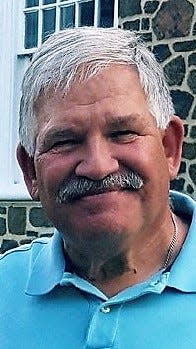Teach students to be critical thinkers
- Oops!Something went wrong.Please try again later.
- Oops!Something went wrong.Please try again later.
In America today, people all too often rely on only one news source. They accept what they hear as fact and refuse to even consider any other information. The result is a deeply divided citizenry. But this isn’t really new. Both Thomas Jefferson (Democratic-Republican Party – National Gazette newspaper) and Alexander Hamilton (Federalist Party – Gazette of the United States) attempted to sway public opinion with newspapers that did not even try to be objective; they represented only the view of their benefactors. Sound familiar? Good thing they didn’t have FACEBOOK!

If we hope to keep this democratic republic, we need to do a better job educating our students with a process that allows them to question what is presented as fact and make decisions on their interpretation of the data. Critical thinking is the foundation of a strong education. Ironically, the Florida standards state that students will: “Use research and Inquiry skills . . .”. but stops at identifying a process that produces critically thinking students.
In the late 1960’s, Edwin Fenton produced a new social studies series. The U.S. book was titled "A New History of the United States: An Inquiry Approach." The series actually created a process by which history would be studied. I believe we need to initiate a similar process beginning in grades 5-6 and reinforce it in every later social studies class. The process should be taught during the first week of each school year.
Below are the important parts of the process:
(1) Recognition of frame of reference. Each of us has a unique way of looking at things. All of our life-long experiences, beliefs and ideas shape it. And it is unique to us. The fact that we all see things uniquely reinforces the concept that history is interpretative. Just read descriptions of the Russia-Ukraine conflict from the Russian perspective and the Ukrainian perspective. Hard to believe it is the same event!
(2) Hypothesis formation. Given a small sampling of data, we formulate hypotheses (educated guesses) about things. The election was stolen! The Mets will win the World Series! Caitlin Clark is the greatest basketball player ever. My favorite example is called “Diggings the Weans” by Robert Nathan (performed by Theodore Bikel). Google it for your entertainment. Once we have a statement, what’s next.
(3) Validation with data. Statements have to be proven by facts (data). Where is the data that supports (validates) the hypothesis? What is the factual argument? Without actual data, hypotheses (and statements) cannot be validated.
(4) Verification. Check the data. It is very important that we go to other sources to verify (fact check) the data. Recognize the frame of reference of those authors and sources, too.
(5) Logical implications of our statement. If the statement is true, what logically follows.
Age-appropriate lessons using portions of primary source documents can be developed and used to enhance instruction of the process.
Can you imagine 5th and 6th graders using higher level thinking skills to evaluate historical data and reach conclusions based on research? It’s true that facts are important! Absolutely! But it is most important that we help to create an educated, thinking citizenry.
Bill Korsonof Naples was a high school American History teacher, coach, advisor and school administrator in New Jersey during his 38-year career. He currently serves on the board of the Coalition for Quality Public Education, as well as other civic organizations.
This article originally appeared on Fort Myers News-Press: Teach students to be critical thinkers
